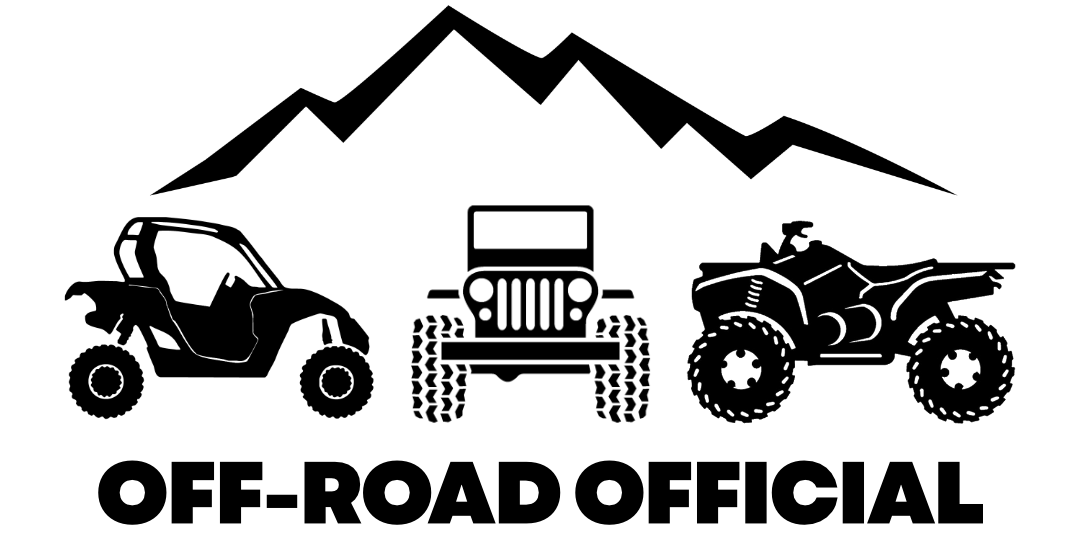Yamaha has always been known for putting out some of the highest quality ATVs and side-by-sides on the planet.
And while their only utility side-by-side offering, the Viking, is pretty darn solid overall, it doesn’t come without a number of drawbacks.
Here are the 13 main reasons you may not want to consider buying a Yamaha Viking in 2024.
13 Yamaha Viking Cons
- If you like speed and lots of torque in the mud, this is probably not the model for you. The Viking has a tough time keeping up if you’re riding in groups with faster models, and at times can feel underpowered…especially in muddy terrain.
- The turning radius is not good on these models, especially the 6-seaters. It’s very difficult to turn around in these bigger models, and you’ll find yourself having to pull 8 or 10 point turns on some trails.
- The factory headlights on the Yamaha viking suck, plain and simple. Their halogen lights and won’t give you anywhere close to the brightness you need for driving at dusk, night or in the early mornings.
- The Yamaha Vikings are LOUD. The engine noise in the cab is high enough that when driving 25+ mph, you won’t be able to hear your passengers. You’ll have to slow down to carry on a conversation while riding.
- The center cup holders may as well be cup heaters, as you’ll find that your drink is warm after sitting in one after riding for 10+ minutes. The radiator lines run directly under the cup holders and warm the plastic, which warms your drink.
- The Yamaha Vikings are technically 3-seaters or 6-seaters, but the cab is pretty tight to sit three deep on any row of seating. You’ll be shoulder to shoulder, and it’s more realistic to fit a child as the third rider in between two adults than it is to fit three full adults across one row.
- The stock radiator fans in the Yamaha Vikings are a weak spot, with the fan motor having a tendency to fail before too long. One of the most common repairs on these machines according to dealers/mechanics is replacing a radiator fan that’s gone bad.
- The radiators in these machines are located lower to the ground than you’ll find in some competitive models. The radiator’s location leaves it prone to being clogged up with debris more easily, which leads to the engine overheating.
- The shoulder restraints on the side are there for good reason, but they look a little odd sitting so high up on the side. Here’s to hoping that Yamaha rethinks this design to include higher side doors and removes these outer shoulder restraints in future models.
- Over time, many Vikings will run into an issue with spring sag. This usually happens after 500 or 1,000 miles and leads to your viking riding down lower than it should and making bottoming out for common.
- The header pipe on the exhaust system is very prone to breaking off where they bolt onto the machine. This happens because they’re not well supported and the vibration from driving weakens their connection over time.
- The e-brake is prone to squeaking, especially in the first few hundred miles on new units.
- The Yamaha Vikings are some of the most expensive UTVs in the industry, yet don’t offer the same performance levels or accessories that some similar models come with for the same price or cheaper.
You can read about the fixes and ways to overcome these drawbacks in this guide to the Yamaha Viking’s most common problems.
The Viking News Is Not All Bad
Every side-by-side will have its drawbacks, as evidenced here with the Viking.
That said, the Viking’s positives outweigh its cons.
It’s one of the most reliable side-by-sides in the industry. Aside from the few issues listed, you’ll almost never find your Viking in the shop for something serious and costly.
They’re also about as durable as a UTV comes. And while they may get there slower than other models, there’s almost nowhere the Viking can’t take you.
You just have to decide if the expensive price is worth it with a number of other models out there making for better overall values.


